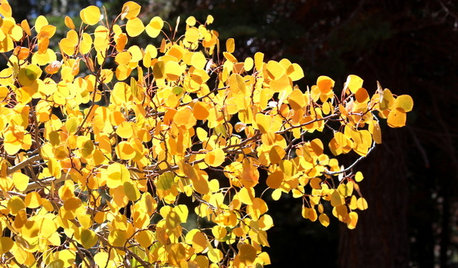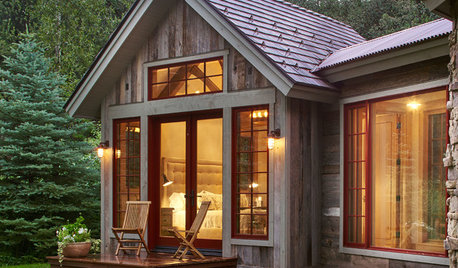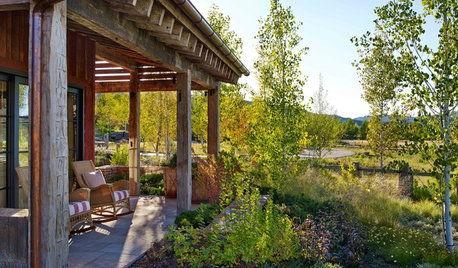Aspen and poplar - Do I or don't I?
ddifranco
8 years ago
Featured Answer
Sort by:Oldest
Comments (39)
salicaceae
8 years agomad_gallica (z5 Eastern NY)
8 years agoRelated Discussions
I don't want to order 25 chickens , What do I do?
Comments (8)Call nearby feed stores, and ask if they will take small orders from hatcheries. Just yesterday I called the local Wilco to ask if they would take a small order for Polish Crested chicks. They said no, they only sell standard, common breeds, and no special orders, but they suggested I check with another of their stores to see if they would do it. So, I called another store and they said "we have some Polish Cresteds here in the store right now"! It was an hour drive, but I came home with 6 tiny Polish Cresteds the same day! That particular store does take customer requests. I don't know if my 6 chicks were leftover from someone else's order of 25, or what. In any case I was lucky because I didn't want more than about 6 chicks. Ask around! I got my chicks in 3 phone calls....See MoreBog & size: Do I Do, or do I Don't
Comments (5)Zone 4 Tucson, AZ Sonoran Desert, 2500' elevation Corrie, I REALLY like your thinking. I REALLY want to do that, I'm somewhat afraid of it. I don't want to end up with a pond full of a bulging, heaving, mass of green monster, either. How often do you need to remove baskets full of it, and what do you do with it? And, where is the beauty of submerged, or even floating non blooming plants? I might as well fill it in with dirt. Help me out here. Okay, I've read about hornwort, I'll get some. That may be the first plant I put into the pool. No duckweed, though. My pool is too deep (3 to 8 feet) for even lilies, which, as I said, I thought were floaters, not rooted in dirt. What can I use instead of, that hang their roots just in the water? And why can't I do that with water lilys? These expensive floating gardens support land plants without dirt, in the ponds, and their bare roots are sucking up water... I DO know I can't do everything at once, or even much at once. If I start out with hornwort to keep it clean, how much work is there to controlling that stuff? I don't want to solvle one problem and make others. And doesn't that stuff get caught in the filter? Don't you have to keep the water moving, at least some movement? I don't want stagnant, stinky polluted nasty water. Mike, No, I do not PLAN to use it for swimming, but I might, so I will test it at times. And if it's clean enough, might have dogs in it on occassion. I may put some edible fish in it. Doesn't the water need movement for them? Do I need mosquito eaters? And then bigger fish to help control them? Or, are they edible? Deep fried and chocolate covered? Ella Thanks for your responses....See Moredo I or don't I? what ould you do??
Comments (6)Wonderful news! I met with the owner for a check of the systems. Here's what does work....all the fans, both modine heaters, most of the thermostats. Here's what doesn't work.....one of the thermostats needs replaced, the emitters (no problem, I'm not going hydroponic)....the pump for the cool cell panel. the panel itself is in great shape. Oh, the small, recirculating fans are shot too, but that's minor. The sidewalls are 6' and are are set in concrete, but the overall height is 12'+, so I can work with that. At present I have a 1000 square foot greenhouse, so I do have a bit of experience. I learned a LOT from my first one. Mainly that I wanted a bigger one! lol I've already got that one sold so that will help offset the cost of the new one. THANK YOU to all who offered advice and/or encouragement....See MoreI don't see why more people don't do Halloween...
Comments (6)You did a great job!!! We live way off the road and don't get anyone. I use to really decorate and loved dressing the part. I'll bet you scared some kids off LOL Diana...See Morecakbu z9 CA
8 years agowisconsitom
8 years agolast modified: 8 years agoken_adrian Adrian MI cold Z5
8 years agoddifranco
8 years agoken_adrian Adrian MI cold Z5
8 years agoddifranco
8 years agowisconsitom
8 years agoddifranco
8 years agolast modified: 8 years agoSelect Landscapes of Iowa
8 years agowisconsitom
8 years agolast modified: 8 years agoddifranco
8 years agowisconsitom
8 years agoddifranco
8 years agowisconsitom
8 years agoddifranco
8 years agolast modified: 8 years agoUser
8 years agoddifranco
8 years agoHuggorm
8 years agowisconsitom
8 years agoddifranco
8 years agoHuggorm
8 years agowisconsitom
8 years agoHuggorm
8 years agofloral_uk z.8/9 SW UK
8 years agoedlincoln
8 years agolast modified: 8 years agoddifranco
8 years agoFrozeBudd_z3/4
8 years agolast modified: 8 years agoNHBabs z4b-5a NH
8 years agoken_adrian Adrian MI cold Z5
8 years agowisconsitom
8 years agoddifranco
8 years agowisconsitom
8 years agokatob Z6ish, NE Pa
8 years agokatob Z6ish, NE Pa
8 years agowisconsitom
8 years agoDawn In southern Alberta
7 years ago
Related Stories

LANDSCAPE DESIGNGreat Design Plant: Quaking Aspen for 3-Season Beauty — on Its Own Turf
It offers bright fall foliage, snowy winter bark and lush green leaves in summer. Just don't try to plant quaking aspen away from its home
Full Story
GUESTHOUSESHouzz Tour: A River (Almost) Runs Through It in Aspen
This guesthouse on a family compound has rustic charm, modern touches and dramatic river views
Full Story
WINTER GARDENING6 Reasons I’m Not Looking Forward to Spring
Not kicking up your heels anticipating rushes of spring color and garden catalogs? You’re not alone
Full Story
EVENTSSee 5 Colorado Landscapes That Blend Nature With Artistry
These Denver and Aspen gardens — part of the Cultural Landscape Foundation’s Garden Dialogues series — embrace their larger environments
Full Story
DIY PROJECTSNeat Little Project: Make a Sturdy Stand for Tablets and Books
Save your neck from straining with this handy DIY wooden stand for an iPad, a Kindle or a good old-fashioned cookbook
Full Story
LANDSCAPE DESIGNThe Unparalleled Power of Trees
Discover the beauty and magic of trees, and why a landscape without them just isn't the same
Full Story
KITCHEN DESIGNPopular Cabinet Door Styles for Kitchens of All Kinds
Let our mini guide help you choose the right kitchen door style
Full Story
MATERIALSWoodipedia: Maple Is a Marvel Around the House
A heavy hardwood with lots of potential, maple appeals to modern sensibilities and won't break your budget
Full Story
DECORATING GUIDES10 Easy Fixes for That Nearly Perfect House You Want to Buy
Find out the common flaws that shouldn’t be deal-breakers — and a few that should give you pause
Full Story
CONTEMPORARY HOMESHouzz Tour: A Bark-Covered Floating Getaway on Lake Union
If the unusual siding doesn’t clue you in to the fine craftsmanship in this floating home, the handmade handrails, lights and furniture will
Full Story







wisconsitom